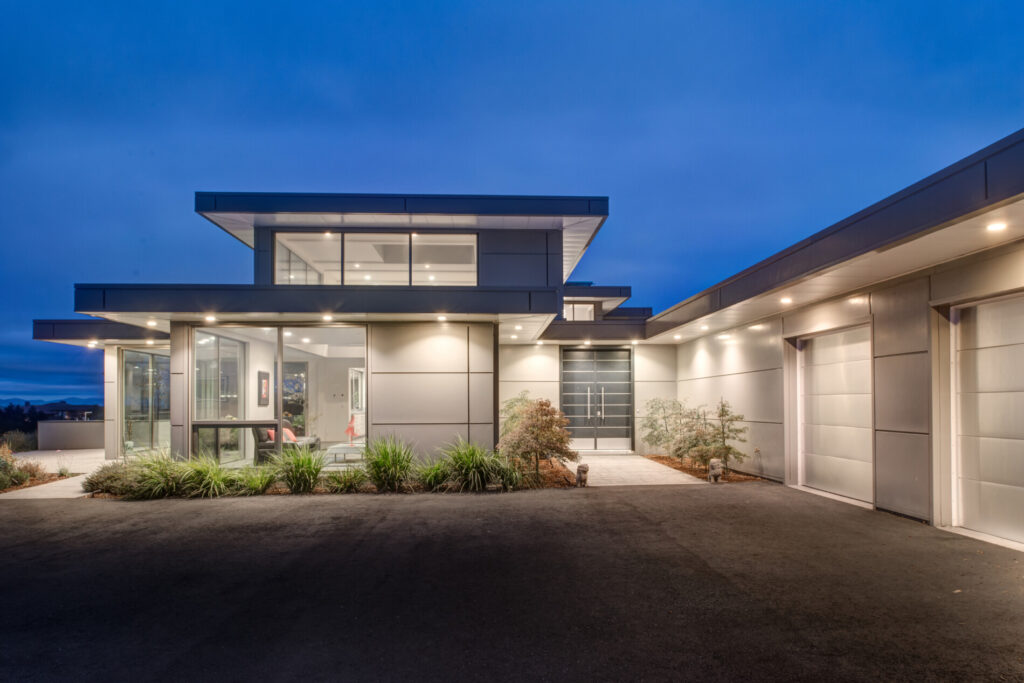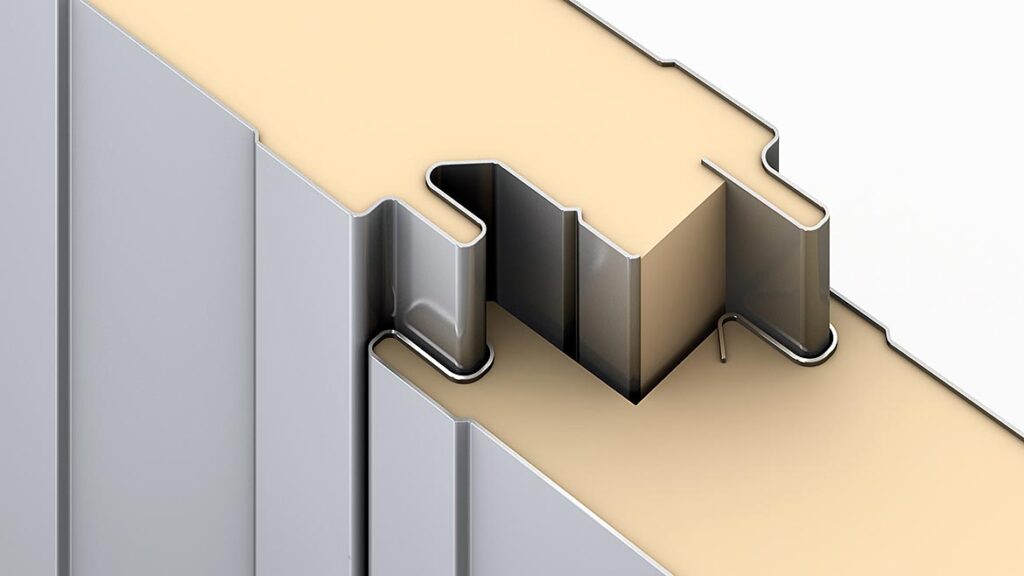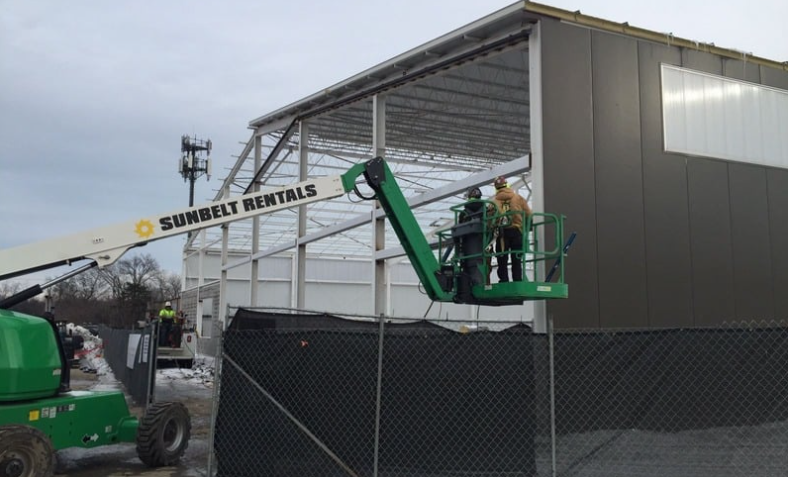The Science Behind Insulated Metal Panels in Steel Buildings

Insulated metal panels (IMPs) are revolutionizing modern construction, particularly in steel buildings. Offering a range of unparalleled benefits, these panels have become the go-to choice for architects and builders seeking high-performance, energy-efficient solutions. This article delves into the science behind insulated metal panels, highlighting their advantages, longevity, and impressive insulation properties, including their R-value.
What Are Insulated Metal Panels?
Insulated metal panels are advanced, sandwich-structured composites used in walls and roofs of various building applications. They consist of two metal sheets, typically made of steel or aluminum, with a high-performance insulating foam core in between. The metal layers provide exceptional durability and strength, while the core offers superior thermal insulation. Together, they create a robust and efficient building material that combines structural integrity with outstanding energy efficiency.
The Benefits of Insulated Metal Panels
IMPs offer numerous advantages that make them an attractive option for modern construction:
- Energy Efficiency: Insulated metal panels are engineered to provide excellent thermal insulation, significantly reducing energy costs for heating and cooling. The foam core minimizes heat transfer, helping to maintain a consistent and comfortable internal temperature, regardless of external weather conditions.
- Durability: IMPs are highly durable, withstanding environmental factors such as wind, rain, and temperature fluctuations. The metal surfaces are resistant to weathering and corrosion, while the insulating core retains its performance over time. This durability translates to long-term savings on maintenance and repairs.
- Design Flexibility: Available in a wide array of colors, finishes, and profiles, insulated metal panels offer immense design flexibility. Whether for industrial, commercial, or residential buildings, IMPs can be tailored to fit a wide range of architectural styles and aesthetic preferences.
- Quick Installation: One of the standout features of IMPs is their ease of installation. Prefabricated and ready for use, these panels can be installed quickly and efficiently, reducing on-site construction time and labor costs. This makes them an ideal choice for projects with tight deadlines.
- Fire Resistance: Many insulated metal panels are manufactured with fire-resistant materials, adding an extra layer of safety to buildings. The metal surfaces do not combust, and the foam core can be treated with fire-retardant chemicals, enhancing the building’s overall fire protection.
- Sustainability: Insulated metal panels contribute to sustainable building practices. They are often made from recyclable materials, and their energy efficiency helps reduce the environmental impact of buildings over time. Many IMPs also come with environmentally friendly certifications, underscoring their role in promoting green construction.
Additional Benefits

Superior Moisture Control
Insulated metal panels are designed to resist moisture infiltration, which is crucial for maintaining the integrity of the building envelope. The panels’ tight joints and high-quality seals prevent water penetration, reducing the risk of mold growth and interior damage. This moisture resistance contributes to the longevity and durability of the structure, particularly in regions with high humidity or frequent precipitation.
Acoustic Insulation
Beyond thermal insulation, insulated metal panels also provide excellent acoustic insulation. The foam core in these panels can absorb and dampen sound, making them an ideal choice for buildings in noisy environments or for applications where sound control is important, such as schools, offices, and industrial facilities.
Lightweight Construction
Despite their robust structure, insulated metal panels are relatively lightweight compared to traditional building materials. This reduces the overall load on the building’s framework, making them easier and quicker to install. The lighter weight also contributes to lower transportation and handling costs, further improving the cost-effectiveness of construction projects.
Eco-Friendly Options
Many manufacturers now offer insulated metal panels with eco-friendly insulation cores, such as those made from renewable materials or those with low global warming potential (GWP). These options contribute to the sustainability of a building project by reducing the environmental footprint of the materials used.
Improved Indoor Air Quality
The airtight nature of insulated metal panels helps maintain consistent indoor air quality by preventing drafts, pollutants, and allergens from entering the building. This is particularly beneficial for environments where air quality is critical, such as healthcare facilities and clean rooms. For retained energy, you can also visit https://mvhr-systems.co.uk/ and learn about MVHR systems.
Flexibility in Retrofitting
Insulated metal panels can be easily integrated into existing structures, making them a great option for retrofitting older buildings. They can enhance the thermal performance and aesthetic appeal of outdated buildings without the need for extensive structural modifications.
These additional benefits further reinforce the advantages of using insulated metal panels in steel building construction, showcasing their versatility, efficiency, and contribution to sustainable and comfortable building environments.
How Long Do Insulated Metal Panels Last?

The longevity of insulated metal panels is one of their most significant advantages. On average, these panels can last between 30 to 50 years, depending on various factors such as the quality of materials, installation, and maintenance. Here are some key points that influence their lifespan:
- Material Quality: High-quality metal and insulation materials are crucial for the durability of insulated metal panels. Panels made from premium materials are more likely to withstand environmental stresses and maintain their performance over time.
- Proper Installation: Professional installation is essential for ensuring the longevity of insulated metal panels. Properly installed panels are less likely to experience issues such as thermal bridging, water infiltration, or structural damage.
- Maintenance: Regular maintenance can extend the life of insulated metal panels. This includes cleaning the surfaces to remove dirt and debris, inspecting for damage, and addressing any issues promptly. Proper maintenance helps prevent long-term deterioration and ensures the panels continue to perform effectively.
- Environmental Factors: The location and environmental conditions where the panels are installed can impact their lifespan. Panels exposed to harsh weather conditions, such as heavy rain, snow, or extreme temperatures, may require more frequent maintenance or replacement compared to those in milder climates.
What Is the R-Value of Insulated Metal Panels?
The R-value is a critical measure of a material’s thermal resistance, indicating its effectiveness as an insulator. For insulated metal panels, the R-value depends on the type and thickness of the insulation core used:
- Polyurethane Foam: Offering an R-value of approximately R-5 to R-7 per inch of thickness, polyurethane foam is one of the most efficient insulation materials available. It provides exceptional thermal resistance, making it a top choice for maximizing energy efficiency.
- Polyisocyanurate Foam (Polyiso): With an R-value of about R-6 to R-8 per inch, polyiso foam offers excellent thermal insulation properties. It’s often chosen for projects where superior insulation performance is a priority.
- Expanded Polystyrene (EPS): EPS provides an R-value of approximately R-3.5 to R-5 per inch. While slightly lower in thermal resistance compared to other foams, EPS is still a viable and cost-effective option for many applications.
- Mineral Wool: Known for its fire-resistant properties, mineral wool insulation offers an R-value of about R-3.7 to R-4.2 per inch. It’s a solid choice for applications where fire safety is of utmost importance.
The overall R-value of an insulated metal panel is determined by the type of insulation used and the thickness of the panel. By selecting the appropriate combination, builders can achieve the desired level of thermal performance to meet their specific needs.
Environmental Considerations
Insulated metal panels also contribute positively to the environment. While the production process is energy-intensive, the long-term benefits far outweigh the initial impact. The energy efficiency of IMPs significantly reduces heating and cooling demands, leading to lower greenhouse gas emissions over the lifespan of a building. Moreover, many IMPs are made from recyclable materials and adhere to sustainable production practices, further enhancing their environmental credentials.
For a more in-depth exploration of the environmental impact of steel and traditional building materials, you can read the article Exploring the Environmental Impact: Steel vs. Traditional Building Materials.
Conclusion
Insulated metal panels are a highly efficient and durable solution for steel building construction. Their impressive energy efficiency, design flexibility, and ease of installation make them an ideal choice for a wide range of projects. With a long lifespan and significant contributions to sustainable building practices, insulated metal panels are a forward-looking choice for modern construction. By understanding the science behind these panels, including their R-values and longevity, builders can make informed decisions that enhance the performance and sustainability of their projects.